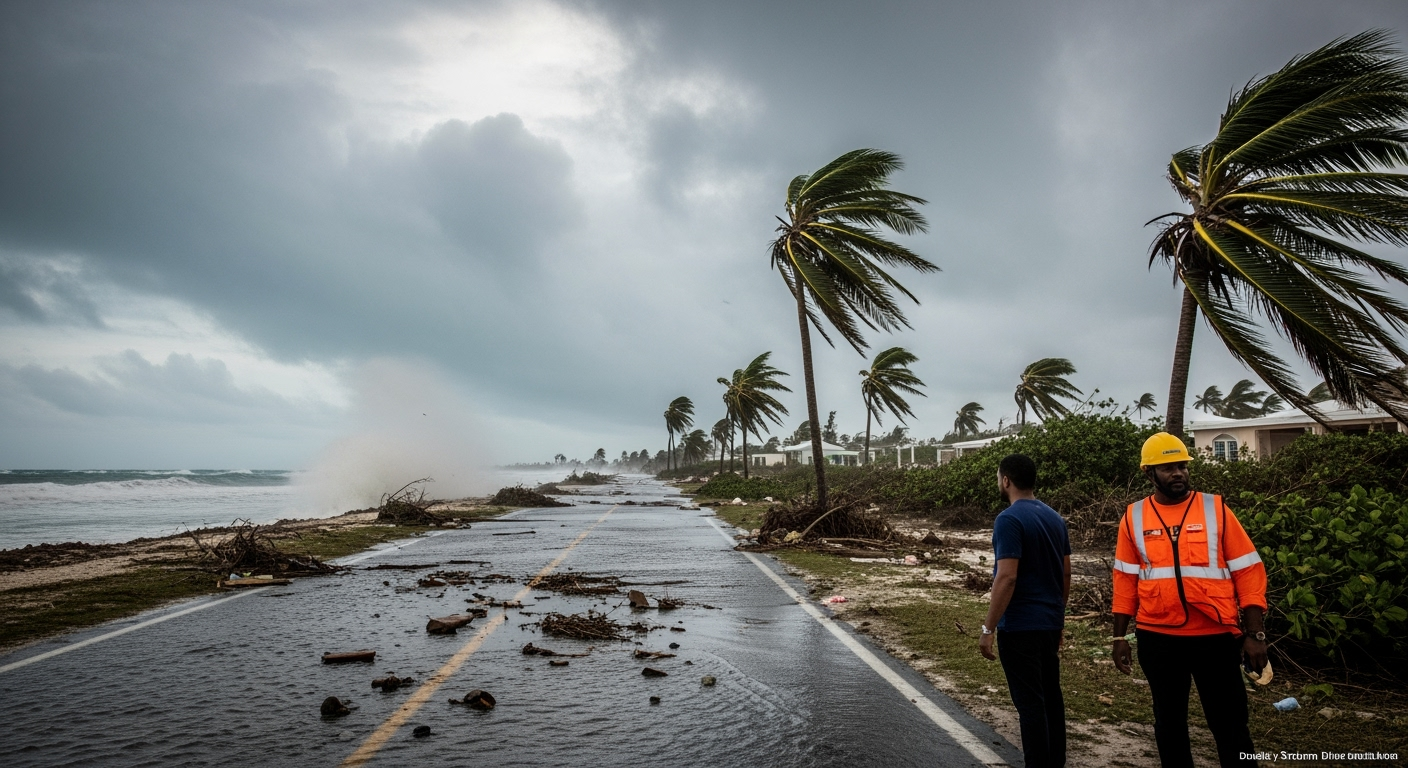Related Articles

Europe Mobilizes to Break China's Rare Earth Grip Amid Escalating Export Controls




A slow-moving and rapidly intensifying Tropical Storm Melissa is currently unleashing a deadly barrage of rain and wind across the Caribbean, leaving a trail of death and destruction in its wake. The storm, the 13th named system of the 2025 Atlantic hurricane season, has already claimed at least four lives across Haiti and the Dominican Republic and threatens to become a major hurricane as it meanders through the region, bringing with it the potential for catastrophic flash flooding, landslides, and widespread infrastructure damage. Millions across Jamaica, southern Haiti, and the southern Dominican Republic are bracing for an extended period of severe weather as Melissa capitalizes on anomalously warm Caribbean waters, raising urgent concerns about a looming humanitarian crisis.
Tropical Storm Melissa, which formed on October 21, 2025, has demonstrated an erratic and dangerously slow forward motion since its inception. As of Friday, October 24, the storm was centered southeast of Kingston, Jamaica, and southwest of Port-au-Prince, Haiti, inching along at speeds as low as 1 to 5 miles per hour. This sluggish pace is a critical factor exacerbating its destructive potential, allowing it to linger over affected areas for prolonged periods, dumping torrential rainfall and exposing communities to sustained damaging winds. Forecasters at the National Hurricane Center (NHC) predict Melissa will strengthen into a hurricane by Saturday and potentially reach major hurricane status — Category 3 or higher, with some models even suggesting Category 4 or 5 — by Sunday or early next week. This intensification is fueled by near-record-warm Caribbean waters, which meteorologists describe as "jet fuel" for the storm.
The primary and most alarming threat from Melissa remains the potential for "catastrophic" flash flooding and landslides. Forecasts indicate rainfall totals could reach between 15 to 25 inches across portions of southern Hispaniola and Jamaica through Tuesday, with isolated areas, particularly Haiti's Tiburon Peninsula, potentially receiving up to 35 inches (89 centimeters) of rain. Such extreme precipitation levels on already saturated and mountainous terrain drastically increase the risk of deadly mudslides, posing an existential threat to vulnerable communities.
The deadly impacts of Tropical Storm Melissa are already tragically evident. At least four people have been confirmed dead, and one person is reported missing across Haiti and the Dominican Republic. In Haiti, three fatalities have been reported: two individuals perished in a landslide in Port-au-Prince, and another died after being struck by a falling tree in Marigot. Five other people in Haiti's central Artibonite region were injured due to flooding and a collapsing wall. The Dominican Republic has reported one death and one missing person.
Beyond the immediate human cost, Melissa has inflicted significant damage to critical infrastructure. Nearly 200 homes in the Dominican Republic have been destroyed, and vital water supply systems have been severely disrupted, leaving over half a million people without access to clean drinking water. Reports also indicate 56 aqueducts are out of service in the Dominican Republic, and a bridge has been destroyed in Haiti, severing crucial community connections. The NHC warns that extensive damage to roads and buildings is anticipated, particularly in southwestern Haiti.
The storm's impact on Haiti is a particular concern due to the nation's profound pre-existing vulnerabilities. Decades of deforestation have left its landscapes highly susceptible to erosion and landslides, while ongoing gang violence, widespread poverty, and weak governance severely hinder effective storm preparedness and response efforts. The United Nations Office for the Coordination of Humanitarian Affairs (OCHA) highlighted that only 11% of health facilities in Haiti's capital with inpatient capacity remain fully operational, a grim reality compounded by an ongoing cholera outbreak that recently saw 139 suspected cases and five deaths in just one week.
Recognizing the dire situation, the UN OCHA allocated $4 million to assist over 10,000 vulnerable individuals in Haiti. This funding is designated for life-saving evacuation support, cash transfers, emergency shelter management, and essential water, sanitation, and hygiene (WASH) kits. Authorities across the region have taken precautionary measures, with Jamaica and the Dominican Republic closing schools and government offices. In Jamaica, all 325 health centers have been closed, and hospitals are operating in emergency mode, equipped with generators capable of providing power for up to 72 hours. Officials are urgently imploring residents in flood-prone areas to seek higher ground and make immediate preparations to protect life and property.
Tropical Storm Melissa's unhurried traverse across the Caribbean is creating a "recipe for disaster," according to AccuWeather's lead hurricane expert Alex DaSilva, enabling a prolonged period of damaging winds, heavy rainfall, and potential storm surge. The National Hurricane Center has issued hurricane watches for the southwestern peninsula of Haiti, from the Dominican Republic border to Port-au-Prince, and a hurricane warning for Jamaica, underscoring the immediate and severe threat.
While current forecasts indicate Melissa is unlikely to pose a direct threat to the continental United States, its eventual trajectory may impact eastern Cuba, the Bahamas, and the Turks and Caicos Islands by early to mid-next week. The storm's unusually slow movement, a trend increasingly observed in tropical cyclones globally and potentially linked to human-caused global warming, further amplifies the risk of sustained, devastating impacts. As the Caribbean battens down for what is expected to be a multi-day ordeal, the full extent of Tropical Storm Melissa's destructive power and its long-term consequences for the region remain a significant and unfolding concern.